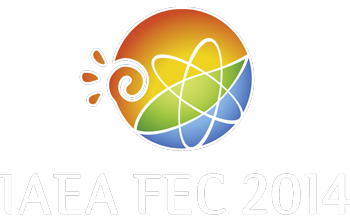Speaker
Dr
Pengfei Zheng
(Southwestern Institute of Physics)
Description
Vanadium alloys, especially those with the compositions of V-4Cr-4Ti, are attractive materials for fabricating self-cooled liquid lithium blanket in a fusion reactor. However, vanadium alloys are still not considered to be used in near term fusion reactors, because the issues relating to its high temperature deformation, neutron irradiation damage and so on are not sufficiently solved. Thus, the mechanical properties, irradiation resistance of this alloy should be improved further.
Vanadium researches for fusion applications in China are mainly carried out at Southwestern Institute of Physics (SWIP). Recently domestic collaborations with other partners have been broadened out to focus on (1) the enhancement of V-4Cr-4Ti alloys via nano-particle dispersion strengthening, (2) 3D atomic probe tomography (APT) analysis of alloying elements in V matrix, (3) effects of H and He ion implantation on V and V-Ti alloy, and, (4) molding of point defects including H and He behaviors in pure V and V-alloys.
Remarkable progress has been achieved in the mechanical alloying of V-4Cr-4Ti material. Ti3SiC2 is proved to efficiently strengthen this alloy with higher thermal stability compared with the situation for other carbides such as TiC and SiC. Dissolution/distribution of the alloying elements and other defects characterized in 3D-APT is expected to benefit more understanding of mechanical alloying process for V-4Cr-4Ti and related impurity control. The most activities challenged the evolution of energetic particles, along with the vacancies caused by them, into the matrix of V and V-alloy. Simulated behaviors of interstitial impurities and substitutional atoms are investigated to explain possible change in mechanical properties of the alloy. Ion radiation hardening caused by H implantation has been found harder to be recovered than that caused by He and H/He implantation. Moreover, the addition of Ti reduces the irradiation hardening effectively.
| Country or International Organisation | China |
|---|---|
| Paper Number | MPT/P7-32 |
Author
Dr
Pengfei Zheng
(Southwestern Institute of Physics)
Co-authors
Chonghong Zhang
(Institute of Modern Physics, Chinese Academy of Sciences)
Mrs
Haiying Fu
(Southwestern Institute of Physics)
Prof.
Jijun Zhao
(Dalian University of Technology)
Prof.
Jiming Chen
(Southwestern Institute of Physics)
Mr
Ran Wei
(Southwestern Institute of Physics)
Mr
Shuang Yang
(Southwestern Institute of Physics)
Mr
Xing Miao
(Southwestern Institute of Physics)
Prof.
Xuru Duan
(Southwestern Institute of Physics)
Prof.
Zengyu Xu
(Southwestern Institute of Physics)

